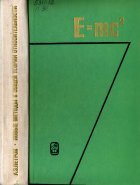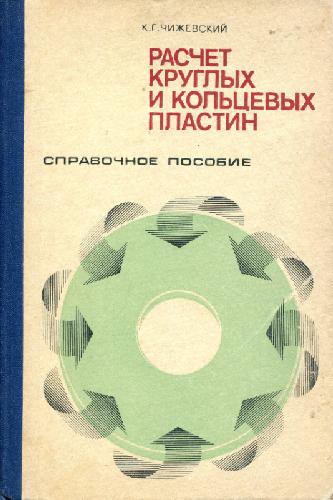- 2 402 202 книги
- Поиск
libcats.org












Главная →
The Fokker-Planck Equation: Methods of Solutions and Applications (Springer Series in Synergetics)
The Fokker-Planck Equation: Methods of Solutions and Applications (Springer Series in Synergetics)
Hannes Risken, Till FrankThis book with Chapt. 12 on Statistical Properties of Laser Light is an example where the wish for general schemes creates selfmomentum that defeats the objective to describe real physics. The difficulties become serious when authors engage deeply in mathematical tools, here the Fokker-Planck equation, and impose methods onto systems for convenience, or to demonstrate an application - while compromising much on actual physics and the foundations. As a consequence, the missing integrity leaves readers behind in big uncertainty if obtained (formal) results represent, or do no longer represent (laser) physics.
The approach in the book to "treat the electrical field classically, i.e., neglect its operator character[istic], provided that a proper classical noise source is added [with a] strength ... so that it leads to the correct spontaneous emission rate" remains an ad hoc attempt ("semiclassical") without systematic investigation of the involved approximations and their validity that depends upon the scope of the intended laser investigation. A test for evidence would have been to indicate how higher approximations should be obtained and how they affect the results obtained from the "simple laser model".
Chapt. 12 starts from macroscopic considerations, i.e., an equation for the (complex) amplitude "b" of the field: db/dt = beta*d*b - beta*|b|^2 * b (on the right side the first and second parts represent the pumping and (nonlinear) collision effects, respectively). To introduce fluctuations of the field, a formal Langevin term n(t) is then added heuristically, which implies the "simple laser model". However, the delta-correlated Gaussian noise n(t) does not represent the real interactions; there is no true justification for simply adding this term. Finding a correct description of laser fluctuations requires studying the real physical mechanisms. One important source is the fluctuation in the pumping light itself. Therefore, the associated term ("beta*d") represents actually a random fluctuation. Consequently, we face a problem and a stochastic differential equation very much different from the artificial application of the Langevin equation, or the equivalent Fokker-Planck equation. Regrettably, the book does not attempt corresponding answers although crucial for integrity that would be a responsibility of the author, not the reader.
The book is not reader-friendly due to its difficult style of writing, apparently without a professional editing for clarity through better grammar. - The list of References is shockingly outdated (w/o exception all entries are older than 20 years). Note, the shown year of publication (1996) refers to a re-print, not to any revision of the 2nd edition which had been published years before, in 1989. It is very misleading, when the Synopsis to this book claims: "A supplement is included, containing a short review of new [!] material together with some recent [!] references."
The approach in the book to "treat the electrical field classically, i.e., neglect its operator character[istic], provided that a proper classical noise source is added [with a] strength ... so that it leads to the correct spontaneous emission rate" remains an ad hoc attempt ("semiclassical") without systematic investigation of the involved approximations and their validity that depends upon the scope of the intended laser investigation. A test for evidence would have been to indicate how higher approximations should be obtained and how they affect the results obtained from the "simple laser model".
Chapt. 12 starts from macroscopic considerations, i.e., an equation for the (complex) amplitude "b" of the field: db/dt = beta*d*b - beta*|b|^2 * b (on the right side the first and second parts represent the pumping and (nonlinear) collision effects, respectively). To introduce fluctuations of the field, a formal Langevin term n(t) is then added heuristically, which implies the "simple laser model". However, the delta-correlated Gaussian noise n(t) does not represent the real interactions; there is no true justification for simply adding this term. Finding a correct description of laser fluctuations requires studying the real physical mechanisms. One important source is the fluctuation in the pumping light itself. Therefore, the associated term ("beta*d") represents actually a random fluctuation. Consequently, we face a problem and a stochastic differential equation very much different from the artificial application of the Langevin equation, or the equivalent Fokker-Planck equation. Regrettably, the book does not attempt corresponding answers although crucial for integrity that would be a responsibility of the author, not the reader.
The book is not reader-friendly due to its difficult style of writing, apparently without a professional editing for clarity through better grammar. - The list of References is shockingly outdated (w/o exception all entries are older than 20 years). Note, the shown year of publication (1996) refers to a re-print, not to any revision of the 2nd edition which had been published years before, in 1989. It is very misleading, when the Synopsis to this book claims: "A supplement is included, containing a short review of new [!] material together with some recent [!] references."
Популярные книги за неделю:

Проектирование и строительство. Дом, квартира, сад
Автор: Петер Нойферт, Автор: Людвиг Нефф
Размер книги: 20.83 Mb

Система упражнений по развитию способностей человека (Практическое пособие)
Автор: Петров Аркадий НаумовичКатегория: Путь к себе
Размер книги: 818 Kb

Сотворение мира (3-х томник)
Автор: Петров Аркадий НаумовичКатегория: Путь к себе
Размер книги: 817 Kb

Радиолюбительские схемы на ИС типа 555
Автор: Трейстер Р.Категория: Электротехника и связь
Размер книги: 13.64 Mb
Только что пользователи скачали эти книги:

Фэнтези 2007
Автор: Пехов Алексей, Автор: Ночкин Виктор, Автор: Уланов Андрей, Автор: Олди Генри Лайон, Автор: Громыко Ольга, Автор: Харитонов Михаил, Автор: Логинов Святослав, Автор: Осояну Наталия, Автор: Новак Илья, Автор: Аренев Владимир, Автор: Нестеренко Юрий, Автор: Точинов Виктор, Автор: Балабин Михаил, Автор: Бондарев Олег, Автор: Челяев СергейКатегория: Фэнтези
Размер книги: 1.23 Mb

Новые методы в общей теории относительности
Автор: Петров А.З.Категория: Physics, Gravitation
Размер книги: 5.56 Mb

Условия и факторы развития малого предпринимательства в регионах РФ. Отчет по результатам общероссийского исслед.М., ВЦИО
Автор:Категория: Бизнес коммерция предпринимательство
Размер книги: 11.53 Mb

Курс математического анализа. Т.3 Ч.2 Интегральные уравнения. Вариационное исчисление
Автор: Гурса Э.Категория: Mathematics
Размер книги: 3.77 Mb

Расчет круглых и кольцевых пластин. Справочное пособие
Автор: К.Г. ЧижевскийКатегория: Tech, Сопротивление материалов
Размер книги: 3.14 Mb

Христианство и ислам в контексте современной культуры: Межрелигиозный диалог в России и на Ближнем Востоке: Коллективная монография
Автор:Категория: Культура. Культурология
Размер книги: 4.70 Mb

Murray and Nadel's Textbook of Respiratory Medicine, 5th Edition
Автор: Robert J. Mason MD, Автор: V. Courtney Broaddus MD, Автор: Thomas Martin, Автор: Talmadge King Jr. MD, Автор: Dean MD Schraufnagel, Автор: John F. Murray MD DSc(Hon) FRCP, Автор: Jay A. Nadel MD DSc(HON)Категория: Медицина
Размер книги: 56.44 Mb

Конструирование пластмассовых изделий для литья под давлением
Автор: Мэллой Р.А.
Размер книги: 7.53 Mb




